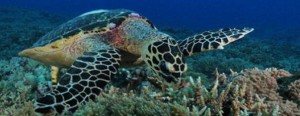
QUEZON CITY, Philippines – The Philippine Government through the Department of Environment and Natural Resources (DENR) launched on Thursday a five-year initiative that aims to boost ongoing efforts to protect five of the country’s marine key biodiversity areas (MKBAs).
The project, called “Strengthening the Marine Protected Areas to Conserve Marine Key Biodiversity Areas,” involves the establishment of a more coordinated approach to conservation efforts in the Verde Island Passage, the Lanuza Bay in Surigao Del Sur, the Davao Gulf in Southern Mindanao, the Tanon Strait Protected Seascape in Central Visayas, and the West Sulu Sea in Southern Palawan.
These MKBAs are among the richest in the country in terms of coastal and marine biodiversities and their protection is critical to ensure the fish population in the Southeast Asian region.
The project is jointly funded by the DENR, the United Nations Development Program (UNDP) and the World Bank’s Global Environment Fund.
DENR’s Biodiversity Management Bureau (BMB) will implement the project in partnership with five conservation organizations with extensive experience in coastal and marine conservation projects in local communities.
The organizations are the National Fisheries Research and Development Institute for the West Sulu Sea Area, Conservation International-Philippines, Haribon Foundation, World Wildlife Fund-Philippines, and RARE-Philippines.
The BMB and its partners will facilitate the setting up of a network of marine protected areas (MPAs) and improve management effectiveness of local communities in these areas.
The project also includes innovative financing mechanisms to generate revenues needed to finance conservation activities in these areas.
Fishing and other development activities in MPAs are restricted and conservation activities there are comprehensive as they cover both the coastal and shoreline ecosystems.
The establishment of MPAs has been proven effective in enabling depleted fish stocks and helping ecosystems to recover and replenish.
At present, there are only 33 MPAs established under Republic Act No. 7586, otherwise known as the National Protected Areas System (NIPAS) Act of 1992.
The law provides the legal framework for the establishment of MPAs. Although there are already a total of 1,620 MPAs created through local ordinances by virtue of the Fisheries Code of 1998, which mandates that 15 percent of coastal waters be set aside as marine reserves.
The project is also fully consistent with the country’s priorities and policies on biodiversity conservation, and contributes to the 2011-2016 Philippines Development Plan by enhancing coastal and marine resource management under the national integrated coastal management program.
The project also contributes to the National Plan of Action for the Coral Triangle Initiative under Executive Order No. 797, particularly on achieving the goals and targets on MPAs, climate change adaptation and ecosystem approach to fisheries management.








Leave a Reply